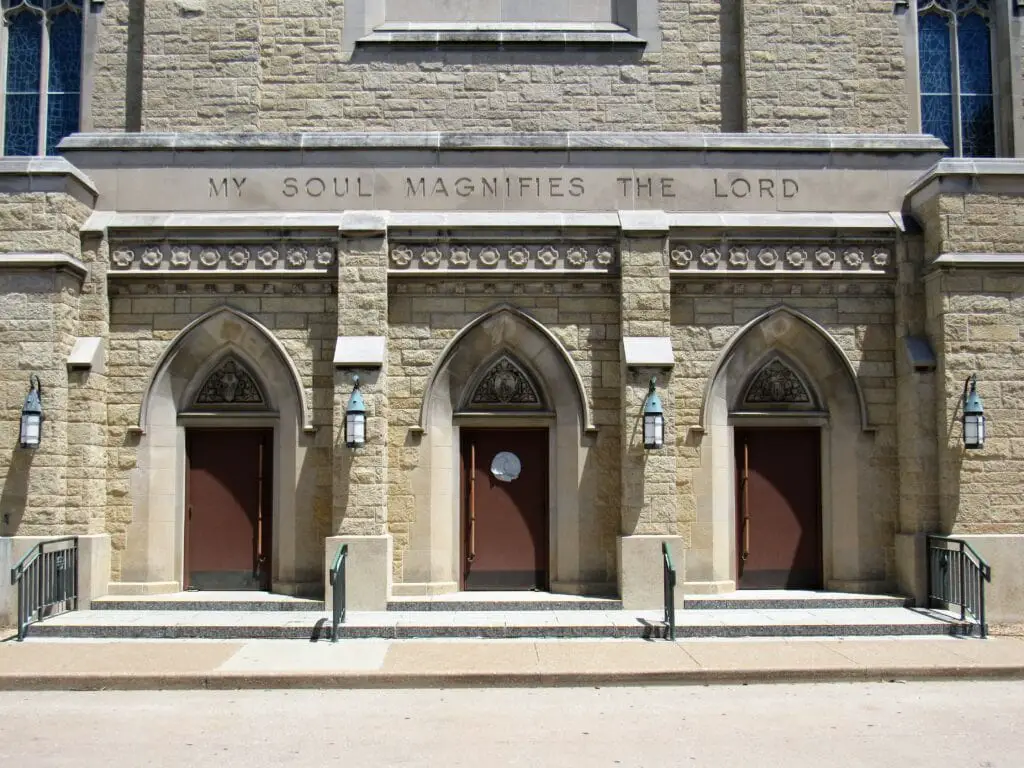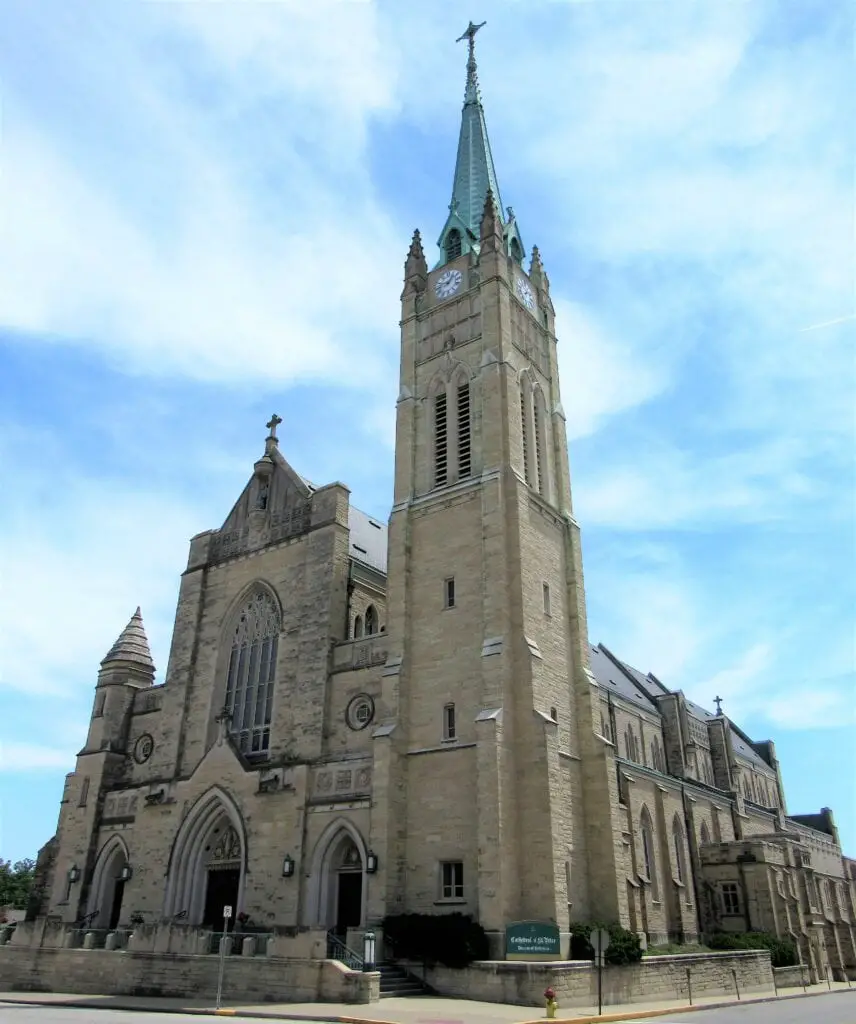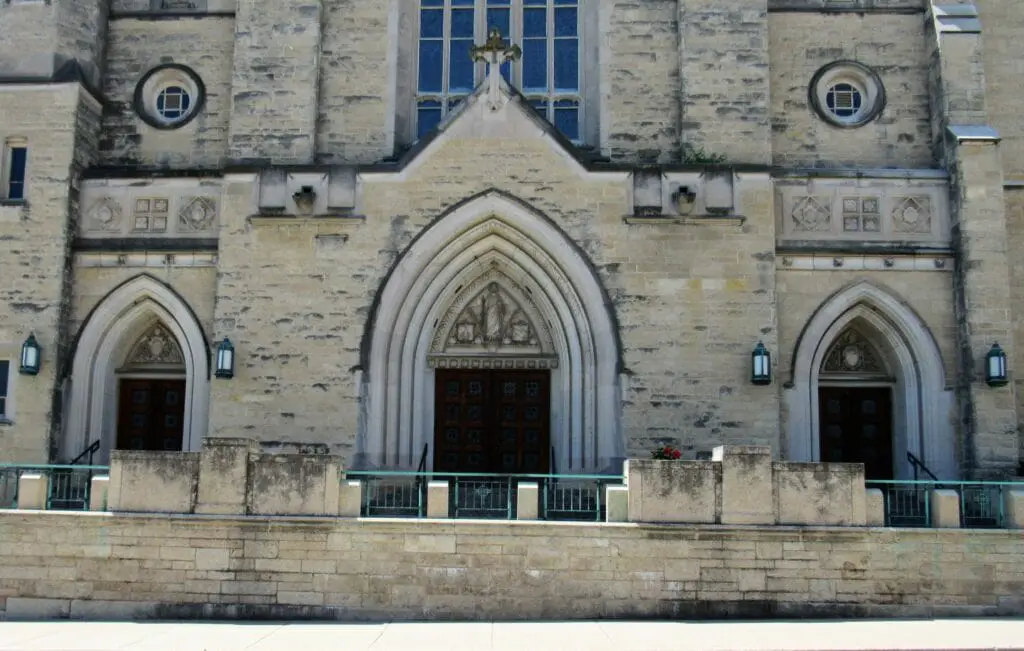Founding and Early History
Nestled within the heart of Belleville, Illinois, stands the Cathedral of Saint Peter, a testament to the area's rich history and devotion. The cathedral's roots extend back to the mid-19th century, a time when Belleville was experiencing a period of rapid growth and development.
It was in 1842 that the initial parish of this remarkable structure was founded, named after the Apostle Saint Barnabas. However, it was not long before a rededication occurred, and the name of Saint Peter, revered as the first Pope by many Christians, was bestowed upon this religious institution in 1847.
As the congregation grew, so did the need for a more expansive structure. The seed planted in 1842 had grown into a mighty tree by 1863, and the community recognized the need for a larger building to accommodate their increasing numbers.
Hence, construction began on a site that was destined to house the beloved cathedral that Belleville knows today. The brick church that was erected on this plot was dedicated in 1866, marking a pivotal moment in the history of the Cathedral of Saint Peter.
Establishment as a Cathedral
The cathedral's journey did not stop there. It was merely the beginning of an illustrious path that would lead it to become the mother church of the Roman Catholic Diocese of Belleville.
This momentous designation came about in 1887 when Pope Leo XIII, recognizing the growth and spiritual need of the area, decided to create a new diocese. The southern portion of the Diocese of Alton was carved out to birth the Diocese of Belleville.
The appointment of a new bishop came with the establishment a new diocese. Reverend John Janssen, a man of profound faith and leadership, was selected as the first bishop of the newly formed diocese.
Bishop Janssen chose it as his cathedral to further enhance the standing of the Cathedral of Saint Peter. This decision affirmed the cathedral's significance in the region.

The Great Fire and Reconstruction
However, like any enduring institution, the Cathedral of Saint Peter had to weather its share of trials and tribulations. A daunting challenge came in the form of a great fire on January 4, 1912.
It started in the upper portion of the building, unnoticed until neighborhood children spotted the flames. By the time firefighters arrived, the fire had gained momentum. Low water pressure and the chilling winter temperature of 15 °F thwarted their efforts to extinguish the blaze.
The fire raged on, engulfing the roof timbers and causing them to collapse onto the lower parts of the structure, igniting them in the process. When the flames finally subsided, all that remained were the exterior walls and bell tower.
The local press estimated the damage at $100,000, a colossal amount at the time, with insurance coverage only expected to cover $40,000 of the repairs.

Architecture and Renovations
The Cathedral of Saint Peter, much like the proverbial phoenix, rose from the ashes, stronger and more beautiful. The Gothic architecture of the present structure draws inspiration from the Cathedral of Exeter in England.
This design, the brainchild of architect Victor Klutho, imbued the cathedral with a unique character that sets it apart.
The mid-20th century was a time of change and renovation for the cathedral. Once a stark reminder of the fire, the brick walls were adorned with Winona split-face dolomitic limestone and accented with Indiana limestone in 1956. This transformation served to highlight the cathedral's architectural beauty and resilience.

Moreover, the sanctuary underwent a significant renovation in 1968 to align with the directives of the Second Vatican Council.
The south end of the cathedral was expanded to increase capacity to 1,270, ensuring that more of the faithful could gather under its venerable arches. The scars left by the fire were gradually healed, replaced by the cathedral's current grandeur.
The Cathedral's Organ
The Cathedral of Saint Peter is not merely a testament to its resilience and architectural beauty. It is also home to an exquisite piece of musical history.
Hidden within its walls is a three-manual, 40-rank organ, a true gem for any music enthusiast. Crafted by the M. P. Moller Company in 1968, this organ echoed melodious hymns within the cathedral for over five decades.
The organ was rebuilt by Christopher Soer company in 2022. This blend of historical and modern elements makes the cathedral's organ a true reflection of the cathedral itself - a harmonious mix of the old and new, tradition and innovation.
Conclusion
The Cathedral of Saint Peter stands as a pillar of strength, resilience, and architectural splendor in the heart of Belleville, Illinois.
It has weathered fire, transformed, and evolved into a space that is not only a place of worship but also a testament to the spirit of the surrounding community. It is a beacon of the past, a light in the present, and a guidepost for the future.
Its journey from a parish to a cathedral, from the ashes of a devastating fire to a renovated architectural marvel, is a story that inspires.
It is a place that brings together a community for religious purposes and as a venue for concerts, events, and social gatherings.
From the tolling of its bells to the melody of its organ, the Cathedral of Saint Peter is a symphony of history, architecture, and faith that continues reverberating across Belleville, Illinois.
It is a narrative etched in stone, a melody composed over centuries, and a testament to the enduring spirit of the community it serves.

